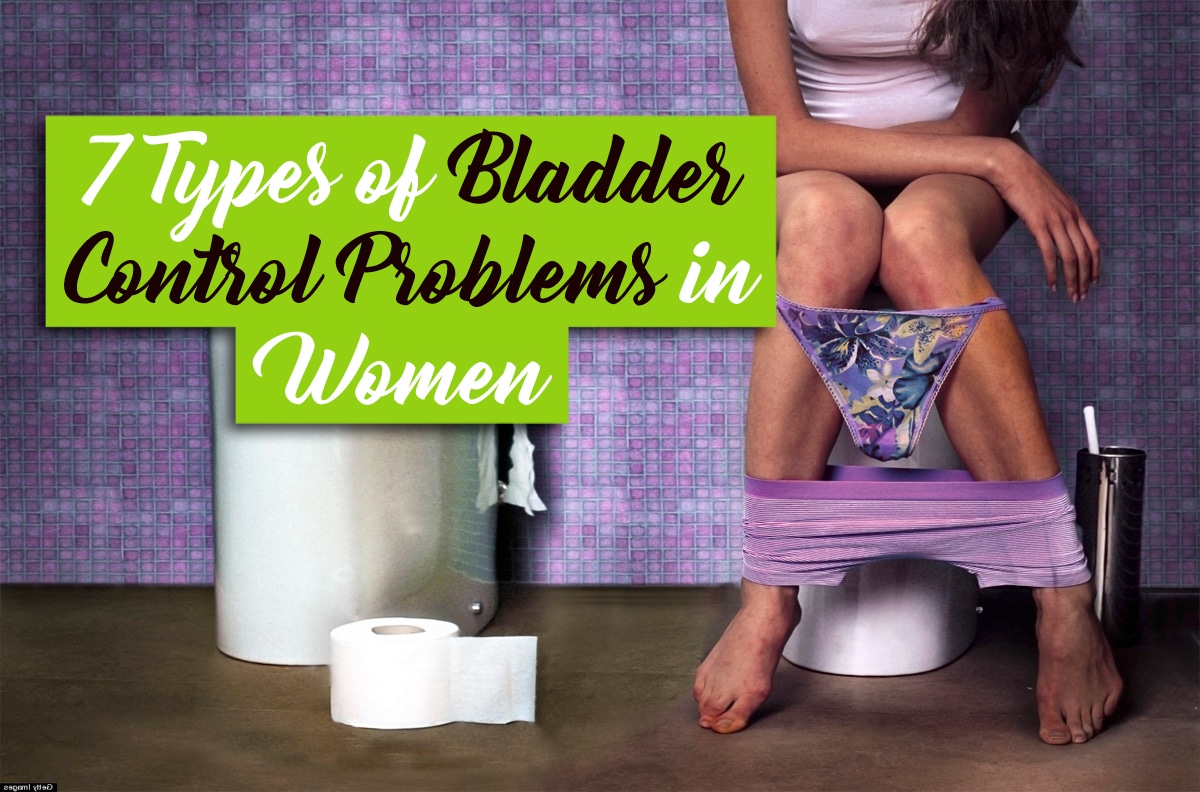Bladder control problems are common for many women. They are characterized by urine leakage, a progressively weaker urine stream, inability to empty the bladder or the frequent urge to urinate and rush to a bathroom. Bladder issues often restrict a woman’s range of physical activities and may cause withdrawal from social interactions, resulting in a diminished quality of life. Causes may include weakness of the pelvic fascio-muscular supports, nerve damage, various medications for neurologic conditions and underlying medical disorders like kidney disease and diabetes. While these problems differ according to cause and contributing factors, urologists can help women regain bladder control by identifying the type of bladder problem and administering the right treatment.
The 7 most common types of bladder control problems in women are:
1. Temporary or transient incontinence
This is a short-lived episode of loss of bladder control that commonly affects more than half of hospitalized women and at least a third of community-dwelling elderly women. It is often a side effect of medications (such as sleeping pills and diuretics) that lower cortical control over the urinary bladder or stimulate overproduction of urine. They may also be caused by surgery, pregnancy, urinary infections, severe constipation, or an inflamed or irritated bladder, vagina or urethra. In all cases, temporary incontinence will resolve on its own as soon as causative factors are identified and corrected.
2. Stress incontinence
This is the involuntary loss of bladder control associated with activities that increase physical pressure and stress in the abdomen and bladder. Affected women report having urine escapes when they laugh, cough, sneeze, have sex, exercise or engage in heavy lifting. It is the most common type of incontinence among women, occurring at any stage of life due to the physical changes of pregnancy, childbirth or menopause, all of which weaken the pelvic floor and reduce the effectiveness of bladder supporting ligaments.
3.Urge incontinence
Urge incontinence is the loss of bladder control commonly resulting from abnormal nerve signals or nerve damage due to a cerebrovascular accident, an infection or diabetes mellitus. It is characterized by a strong, abrupt and urgent need to urinate without prior warning, followed by the escape of a considerable amount of urine almost at once. Women affected by this bladder problem report leaking urine on their way to the restroom, urinate more than eight times per day and usually have to get to the bathroom more than two times overnight.
4. Mixed incontinence
This type of incontinence represents a combination of the characteristics of both urge and stress incontinence, with affected women experiencing episodes of sudden, urgent and uncontrollable urge to urinate together with urine leakage after a sudden cough, sneeze or laughter. All the factors that trigger urge and stress incontinence also cause mixed incontinence, including abnormal nerve signals, nerve damage, weakened pelvic floor muscles and connective tissue abnormalities.
5. Functional incontinence
Unlike the other types of incontinence, functional incontinence is not caused by abnormalities in the urinary system, nerves or muscles, but it occurs when a woman is unable to reach the bathroom in time to void because of mental and physical limitations. For example, a woman who is handicapped (such as having arthritis, a broken leg, Parkinson’s disease or Alzheimer’s disease) may not be able to move to the bathroom to urinate as soon as her bladder capacity is far exceeded, urinating where she is. Therefore, functional incontinence is a side effect of a mental or medical health issue.
6. Overflow incontinence
Characterized by the involuntary leakage of small amounts of urine when the amount of urine in the bladder exceeds the bladder’s maximum capacity, overflow incontinence occurs in women with weak bladder muscles, blocked urethra, kidney stones, scar tissue, pelvic organ prolapse, diabetes and multiple sclerosis. In overflow incontinence, the bladder has a substantial amount of residual urine and tends to overfill rapidly, resulting in the overflow of urine within a very short time. When not promptly treated, overflow incontinence can lead to bladder infection.
7. Overactive bladder
In some women, the inability to control the bladder is characterized by a sudden and unstoppable need to urinate, passing urine eight or more times per day and having to wake up two or more times every night to pass urine. In women with overactive bladder, detrusor muscles contract unpredictably and the inability to control the bladder can be so embarrassing that the affected person may want to isolate herself and limit her work and social life.
For women having bladder control problems, the good news is that a brief evaluation by an experienced urologist can quickly identify the type of bladder problem and pave the way for immediate treatment. If you have bladder control problems, inform your doctor and ask for help. Do not let your embarrassment keep you from getting the help you need. For more information, visit the site Advanced Urology Institute.


